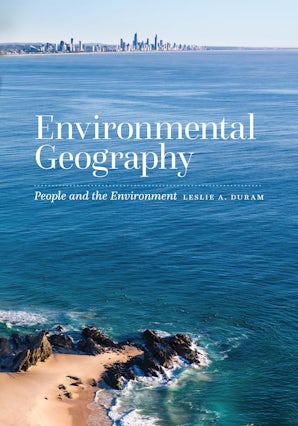Introduction
Section 1 Introduction: How Humans Affect the Environment
Case Studies
- Cars Rule—American Dependence on the Automobile
- Great Barrier Reef—Human Activities Endanger Coral Reefs
- Dead Zones—The Gulf of Mexico
- Great Pacific Garbage Patch
- Nigeria’s Oil Causes Human Rights Abuses and Environmental Degradation
Key Concepts
Agriculture
Food Miles
Air Pollution
Animal Agriculture
Biodiversity Loss
Agrobiodiversity Loss Climate Change
Climate Change Policies
Deforestation
Endangered Species
Energy
Corn Ethanol from Mining the Soil E-waste
Fracking
Genetically Modified Crops
Hazardous Waste
Brownfield Sites Mining
Overfishing
Solid Waste (Garbage!)
Superfund
Technology: Innovation and Consequences
Assembly Line Manufacturing Urbanization
Water Pollution
Water Scarcity
Section II Introduction: How the Environment Affects Humans
Case Studies
6. Climate Change Is Occurring—Regardless of Politics
7. Climate Refugees—Island Nations Disappear Because of Rising Seas
8. Endangered Snow Leopard in Afghanistan—Local Efforts to Promote Conservation
9. The Power of Hurricane Katrina (2005)—Evacuation and the Aftermath
10. The 2004 South Asian Tsunami Natural Disaster
Key Concepts
Adaption
Anthropocene
Small-Scale Solar Power in Africa Drought
Earthquake
Ecosystem Services
Ecotourism
Flood
Global North and Global South
Environmental Crime Habitat and Wildlife
Human Modification of Ecosystems
Global Environmental Agreements Human Population
Hurricanes
Mitigation
U.S. Global Change Research Program National Disasters
Parks and Urban Green Space
Happiness and Sustainability
Protected Areas and National Parks
Tornado
Volcano
Wildfire
Section III Introduction: Sustainable Management of Natural Resources
Case Studies
11. China’s Bold Steps toward Renewable Energy—Better Late than Never
12. Citizen Science—Helping Scientists Understand Migratory Birds
13. Costa Rica’s Peace with Nature: Conservation, Biodiversity, and Sustainability
14. Denmark’s Achievements in Organic Agriculture
15. Great Green Wall of Africa
Key Concepts
Alternative Agriculture
Assessments and “Footprints”
Composting
Zero Waste Communities Earth Day
Electric Cars
Environmental Justice
Professor Maathai and Kenya’s Green Belt Movement Environmental Nongovernmental Organizations (ENGOs)
Environmental Policy
Green Buildings
Green Consumerism
Fleece Jackets from Recycled Bottles! Green Political Party
Green Technology
Recycling
Zero-Waste Home Renewable Energy
Sustainable Cities
Sustainable Development
Auroville, City of Peace Sustainable Diet
Water Conservation
Glossary
Biography
Selected Books Related to Environmental Geography
Index
